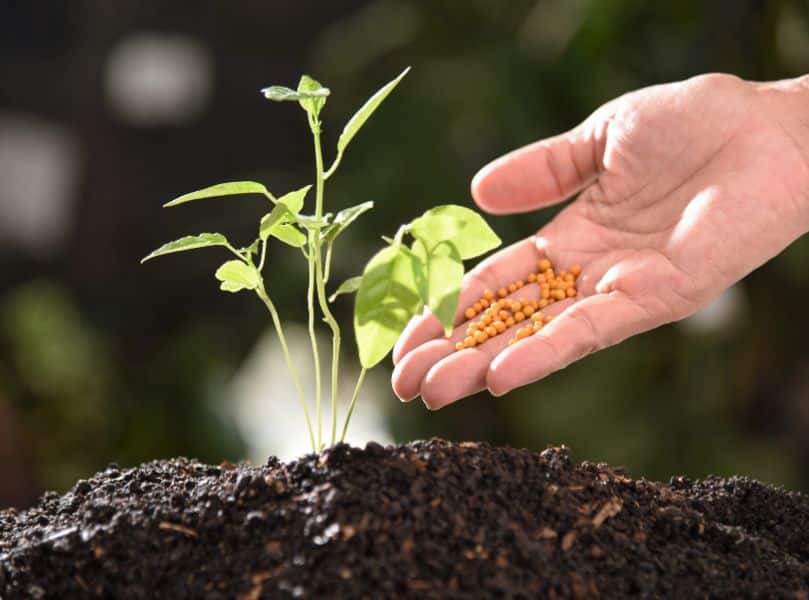
Fall Tree Care: How Fertilizer Prepares Roots for the Cold
As the vibrant leaves of fall begin to carpet the ground, many homeowners focus on raking, pruning, and preparing their yards for winter. While these steps are essential, one critical aspect of tree care often goes overlooked—fertilizing. Applying winter fertilizer for trees in the fall can make all the difference in ensuring your trees develop strong roots, withstand harsh cold, and thrive once spring arrives.
In this blog, we’ll explore why fall fertilization is vital, how it aids fertilizer for tree root growth, and even touch on related care practices, such as how to root a tree branch.
Why Fertilize Trees in the Fall?
Most people associate fertilizing with spring, but trees benefit significantly when fed in the fall. Here’s why:
- Root Growth Happens in Fall and Winter
When temperatures drop, trees shift their energy away from producing leaves and direct it toward root development. Supplying the soil with nutrients during this time strengthens the root system.
- Boosts Cold Tolerance
A healthy root system fortified with nutrients is better equipped to handle freezing temperatures, ice, and snow.
- Prepares Trees for Spring Growth
Fertilizing in fall ensures that trees have an established nutrient reserve ready to support new leaves, flowers, and overall growth when spring arrives.
Choosing the Right Winter Fertilizer for Trees
Not all fertilizers are created equal, especially in tree care in colder seasons. Here’s what to look for:
- Low Nitrogen, Higher Potassium and Phosphorus
Nitrogen promotes leafy growth, which isn’t ideal before winter. Instead, focus on potassium and phosphorus, which enhance root strength and improve stress resistance.
- Slow-Release Formulas
A slow-release fertilizer gradually feeds the tree, reducing the risk of nutrient loss and ensuring long-term benefits.
- Soil Testing First
Before applying fertilizer, test your soil to identify any nutrient deficiencies. This helps avoid overfertilization and ensures your trees get precisely what they need.
Fertilizer for Tree Root Growth: Strengthening the Foundation
The health of your trees begins below the surface. Applying the right fertilizer for tree root growth supports:
- Deeper Root Systems – enabling trees to access water and nutrients even during droughts or cold snaps.
- Disease Resistance – healthier roots mean stronger defense against fungi, pests, and environmental stress.
- Longevity – trees with robust root systems live longer and grow stronger over time.
How to Apply Fertilizer Effectively
- Target the Drip Line
Apply fertilizer along the drip line—directly beneath the outermost branches. This is where the feeder roots absorb the most nutrients.
- Use Proper Depth
Fertilizer should be spread on the soil’s surface and watered in. Avoid deep digging that may damage roots.
- Water Well
After application, water thoroughly to help nutrients soak into the root zone.
Fall Tree Care Beyond Fertilizing
While fertilization plays a key role in fall tree health, it’s not the only step in ensuring your trees are ready for the winter months.
Mulching
Apply 2–4 inches of mulch around the base of trees to help insulate roots, regulate soil temperature, and retain moisture.
Pruning
Removing dead or weak branches in the fall prevents them from snapping under heavy snow and reduces the risk of pest infestations.
If you have damaged or diseased trees that pruning alone won’t fix, consider a professional tree removal service to manage the issue before winter storms make it worse safely.
Tree Inspections
Professional tree service in New Port Richey can identify early signs of disease, structural issues, or root problems and recommend solutions before the cold sets in.
How to Root a Tree Branch
Fertilization supports existing trees, but what if you want to grow new ones? Learning how to root a tree branch can help you propagate new growth for your yard. Here’s a simple process:
- Select a Healthy Branch
Choose a branch from a healthy tree free from disease or damage.
- Cut at the Right Angle
Make a clean cut at a 45-degree angle, ideally 6–12 inches long, with several leaf nodes.
- Dip in Rooting Hormone
This helps stimulate new root growth.
- Plant in a Pot or Ground
Place the cutting in well-draining soil and water regularly.
- Maintain Moisture and Warmth
Covering the pot with plastic can help retain humidity and encourage rooting.
Over time, the cutting develops roots and can be transplanted into your landscape, where future fertilization will further strengthen its root system.
The Long-Term Benefits of Fall Fertilization
Trees are long-term investments in your landscape, and fall fertilization pays off in several ways:
- Enhanced Spring Growth – Trees fertilized in fall often bloom earlier and stronger.
- Improved Appearance – Healthy roots support lush, green foliage in spring and summer.
- Lower Maintenance Costs – Stronger trees require fewer emergency services like removals or disease treatments.
When to Call the Professionals
While DIY fertilization and care are possible, some situations require expert help:
- Trees with significant damage or disease
- Large or mature trees with complex root systems
- Property owners are unsure about the right fertilizer or application techniques
Professional arborists have the expertise and equipment to ensure that your trees receive the proper nutrients and care during winter.
Fertilizing your trees in the fall is one of the best ways to prepare them for the challenges of winter. The right winter fertilizer for trees strengthens root systems, ensures long-term health, and sets the stage for vibrant growth in spring. Combined with mulching, pruning, and inspections, fall fertilization provides complete tree care.
Whether you need advice on fertilizer for tree root growth, want to learn how to root a tree branch, or require professional help through a trusted tree removal service or comprehensive tree service in New Port Richey, investing in fall tree care today ensures your landscape thrives year-round.

